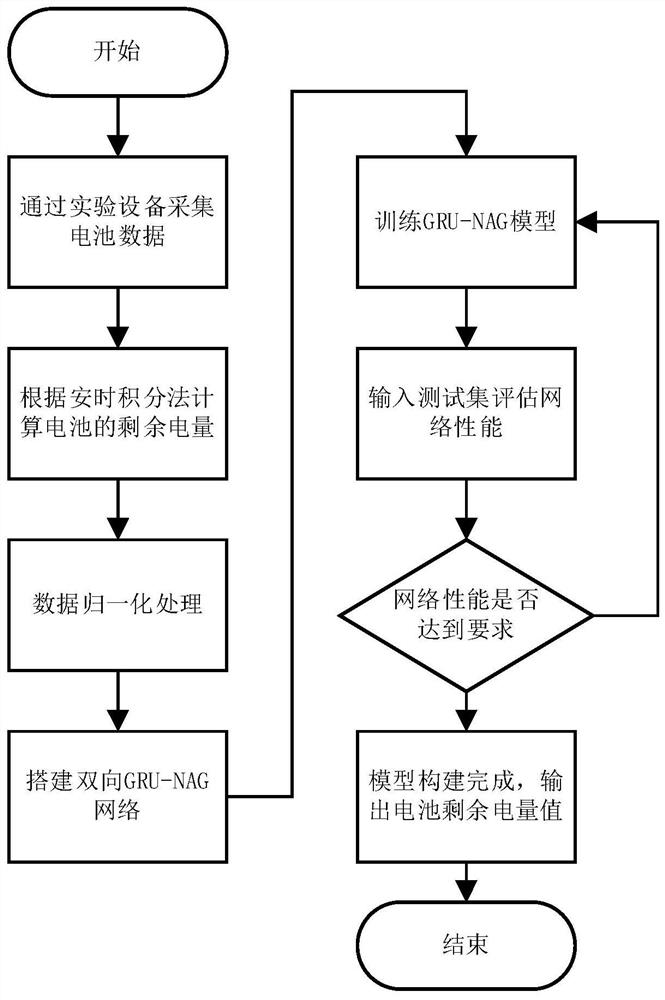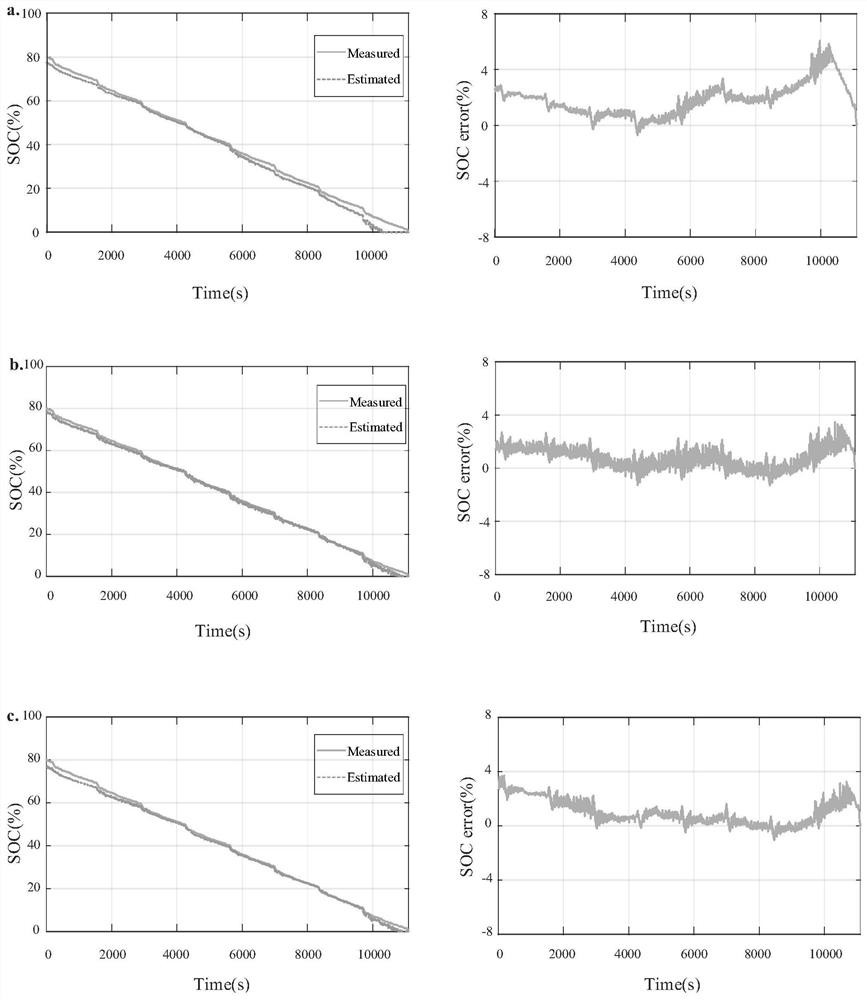Method for estimating SOC of lithium battery by data-driven algorithm considering internal resistance
A data-driven algorithm, lithium battery technology, applied in the direction of measuring electricity, measuring electrical variables, instruments, etc., to achieve the effect of high estimation accuracy and strong real-time performance
- Summary
- Abstract
- Description
- Claims
- Application Information
AI Technical Summary
Problems solved by technology
Method used
Image
Examples
Embodiment Construction
[0050] Below in conjunction with the present invention is further explained;
[0051] Such as figure 1 As shown, the method for estimating the SOC of a lithium battery with a data-driven algorithm considering internal resistance includes the following steps:
[0052] Step 1. Data collection
[0053] The Samsung INR 18650-20R lithium-ion battery was charged and discharged at 0°C, 25°C, and 45°C, and the voltage, current, temperature, and internal resistance of the battery were recorded during the test, and the sampling interval was 1s. The current adopts the discharge current under the standard working conditions established by the United States Environmental Protection Agency (EPC, United States Environmental Protection Agency); the lithium-ion battery is discharged through the IT8818B programmable electronic load produced by ITECH; Espec GMC-71 The high and low temperature test chamber can obtain the ambient temperature parameters of the battery; use the HIOKI BT3562 batter...
PUM
 Login to View More
Login to View More Abstract
Description
Claims
Application Information
 Login to View More
Login to View More - R&D
- Intellectual Property
- Life Sciences
- Materials
- Tech Scout
- Unparalleled Data Quality
- Higher Quality Content
- 60% Fewer Hallucinations
Browse by: Latest US Patents, China's latest patents, Technical Efficacy Thesaurus, Application Domain, Technology Topic, Popular Technical Reports.
© 2025 PatSnap. All rights reserved.Legal|Privacy policy|Modern Slavery Act Transparency Statement|Sitemap|About US| Contact US: help@patsnap.com



